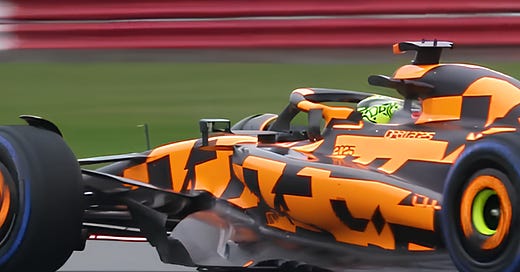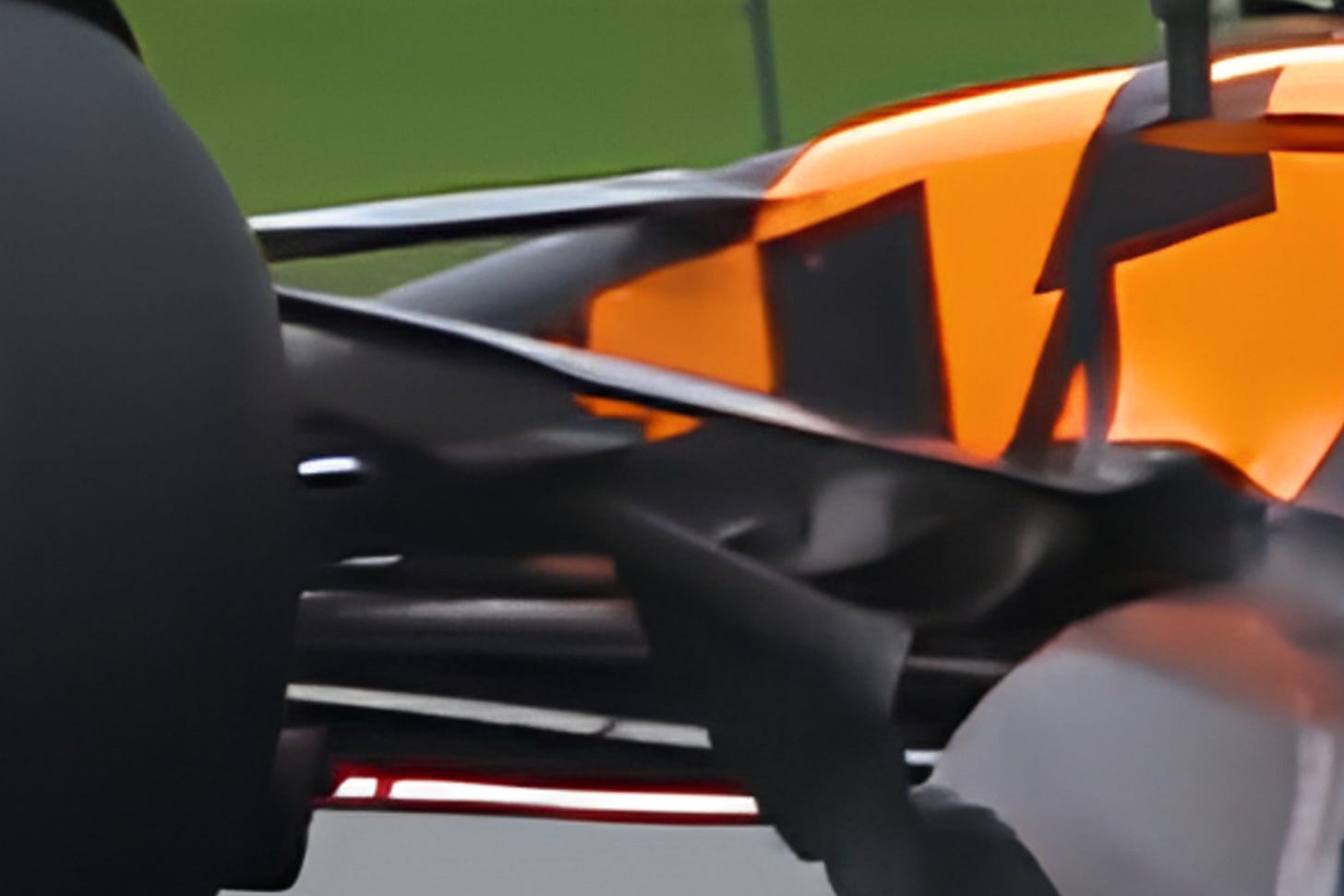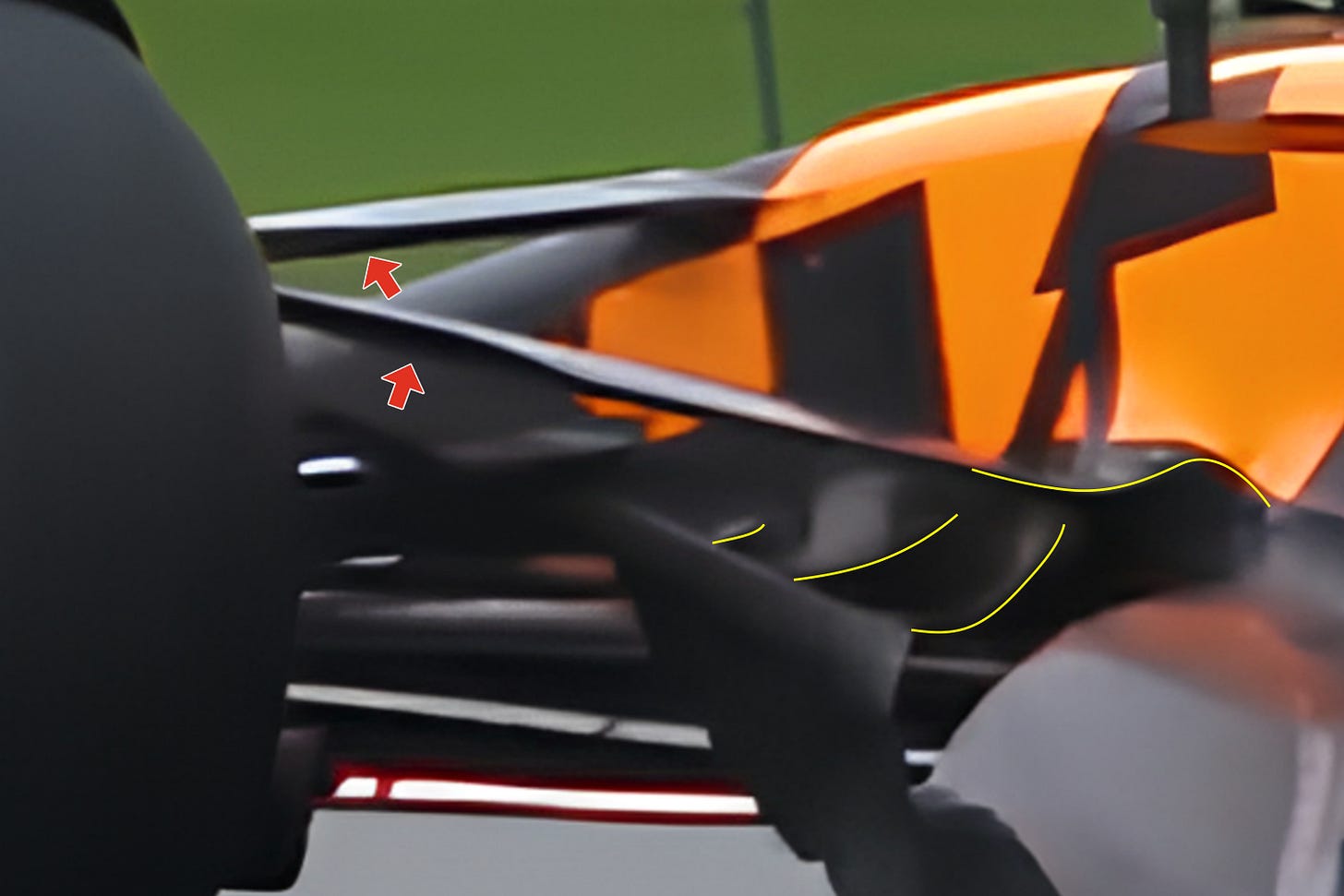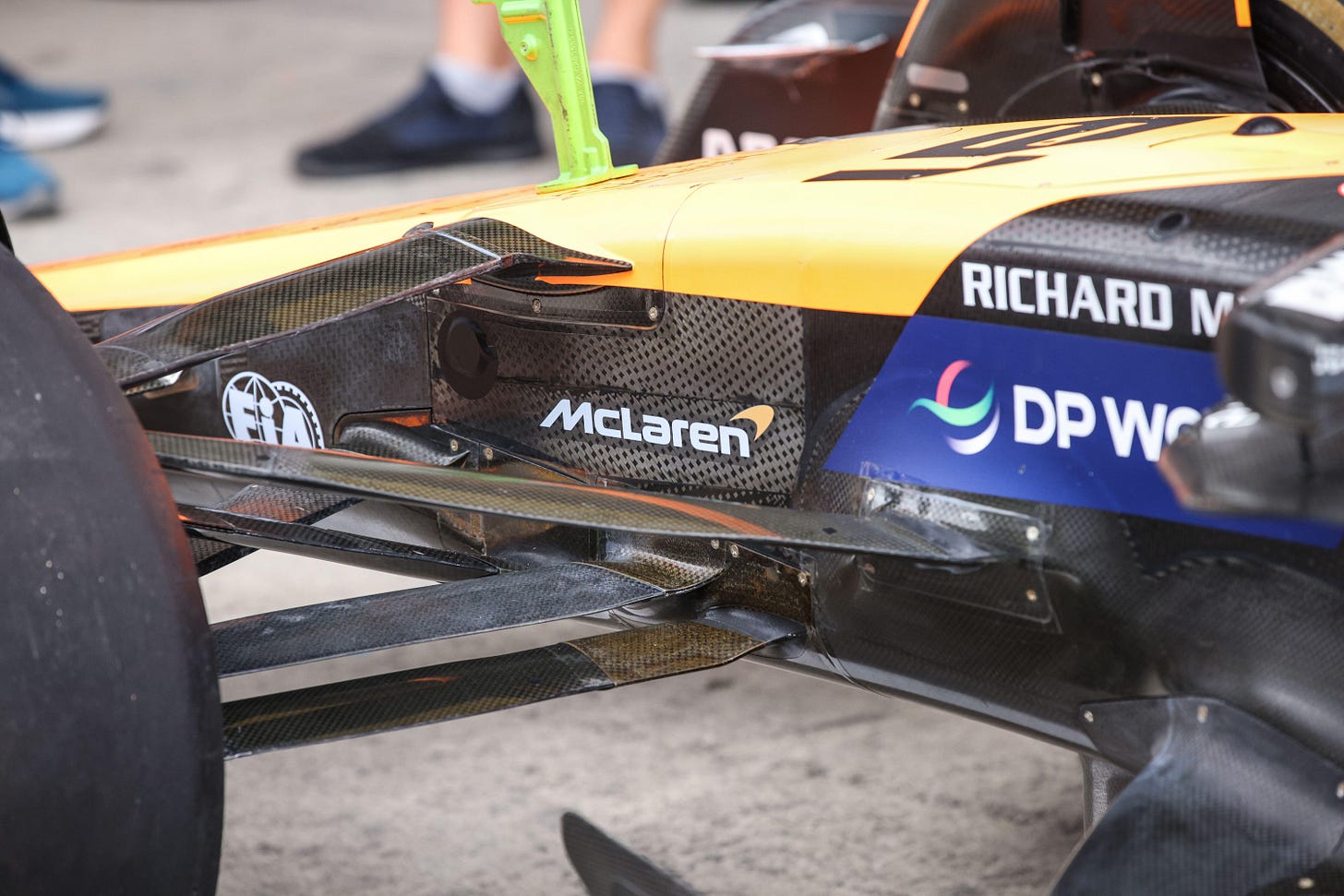Let’s take a look at one of the most interesting features that we’ve seen on the MCL39 so far, albeit all of which have come courtesy of some less than desirable trackside ‘spy shots’ given that McLaren have yet to release any official images of this year’s challenger.
The reason for this, of course, is that teams have been limited in what they could do ahead of the F1 75 live event that will be taking place tomorrow at the O2, in London.
McLaren have clearly identified the front suspension fairings as an area where they can be more creative in 2025, with some decisive changes made to their layout that will influence the airflow’s behaviour before it reaches the floor’s leading edge and the new P-Shaped sidepod inlet.
I’ve upscaled the lead image as much as I dare, to give you more of an idea of what we’re looking at when compared with the MCL38, but I’m sure we’ll be able to return to this in due course when better images become available.
There’s already been a great deal made of how McLaren have lowered the upper wishbone’s rear leg even further down the chassis, having already begun doing this, albeit not to the same extent, in previous seasons.
As discussed elsewhere, this is clearly going to adjust the amount of anti-dive that’s present.
However, whilst that’s clearly a factor, the fairings have obviously been optimised to work in conjunction with one another from an aerodynamic standpoint, which will enable the designers more scope when it comes to the design of the floor’s leading edge, the floor fences, roof of the tunnels and everything else thereafter.
Here, I’ve added some yellow lines to the trailing edge of each of the fairings to make it more obvious how all of these surfaces have been designed to leverage one another at the inboard/chassis side.
First we have the pull-rod, then the lower wishbone’s trail leg, the steering arm (note they’re in that order, front-to-rear, on the McLaren, which is unique to them - at the moment) and finally the rear leg of the upper wishbone.
The fairings are all arched dramatically where they meet with the chassis, with a conical shape present right at the chassis juncture, something that’s most visible on the rearmost fairing.
The position and shapes being created are somewhat reminiscent of aerodynamic devices we haven’t seen for some time now too - Turning Vanes, which disappeared after 2016 due to changes in the regulations.
The outboard portion of the suspension fairings are also twisted in the opposing direction to the inboard end, as the designers are looking to have a more direct effect on the wake created by the tyre alongside.
This isn’t a new feature by any means but the twist distribution seems a little more radical on the new car than its predecessor in this regard (MCL38, below).
This image of the MCL38 also makes the chassis blisters being employed more obvious, as you’re not fighting the visual effect created by the camo livery but, it’s clear that these have been enhanced further still this season, in order to leverage their interaction with the suspension fairings.
In the wider shot, below, we can see how this contouring will influence the airflow’s passage downstream, with the new P-shaped sidepod inlet and more imposing SIS enclosure taking advantage of these more optimised flow conditions.
And, whilst it’s not a new trick for McLaren, it was really Red Bull who developed this solution and have iterated their own design ever since.
There’s a whole host of interesting features on the MCL39 that I’ll cover in more detail in the coming months but for now you can check out my broader analysis of the car here: https://www.planetf1.com/features/mcl39-uncovered-mclaren-early-tech-secrets










The pull-rod, the lower wishbone’s trail leg, and the steering arm, laied out in a way unique to McLaren, was that done for weight distribution reasons (the rack and pinion assembly is closer to the driver) or for aerodynamic reasons (as your article suggests, it allows for some agressive fairings and flow control towards the floor)?
Thanks!